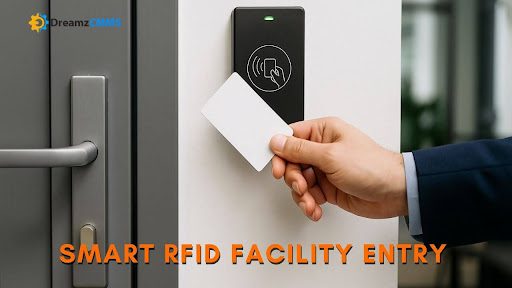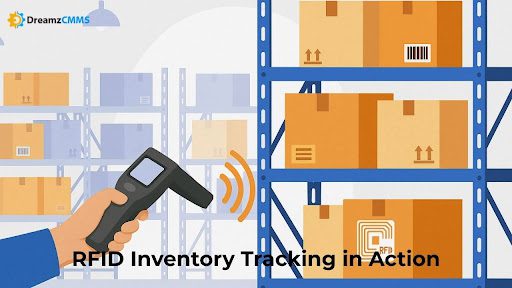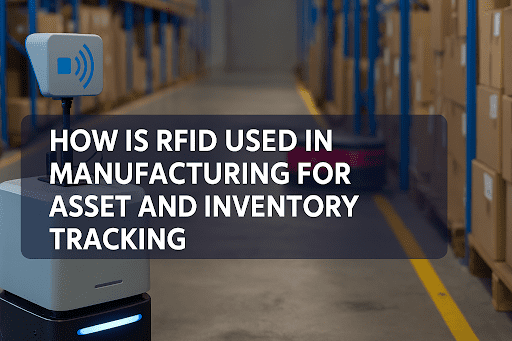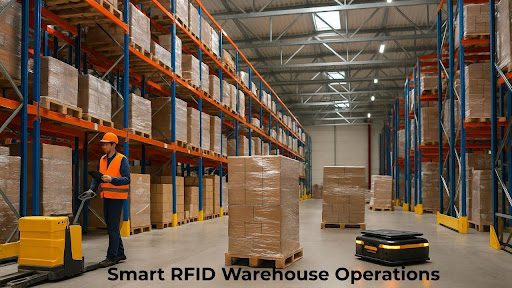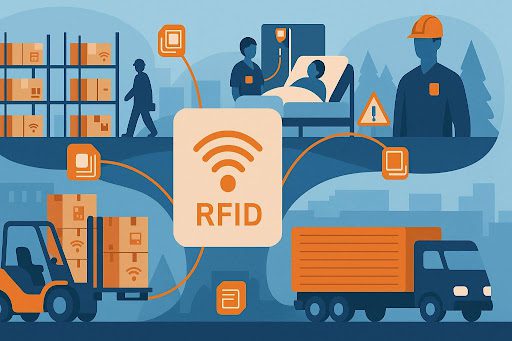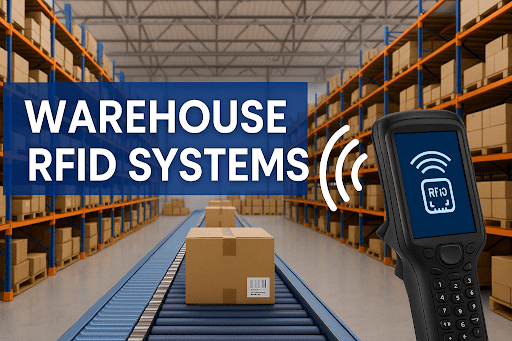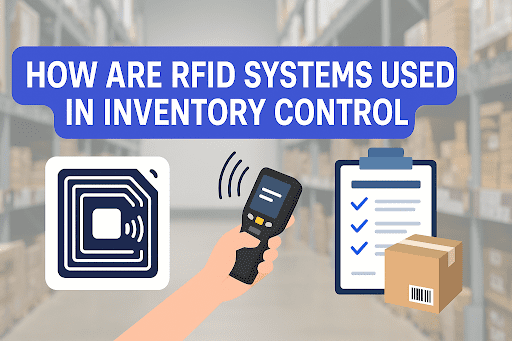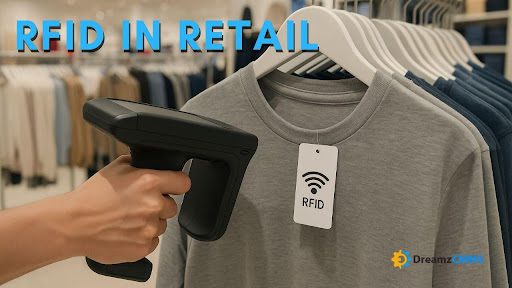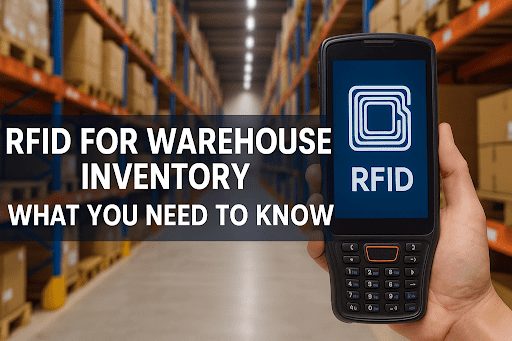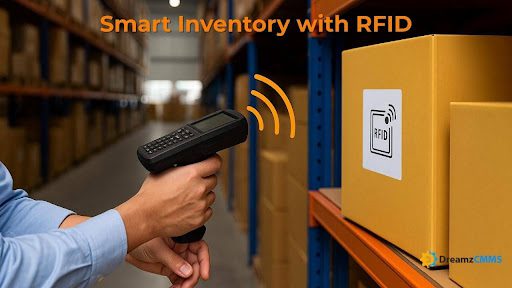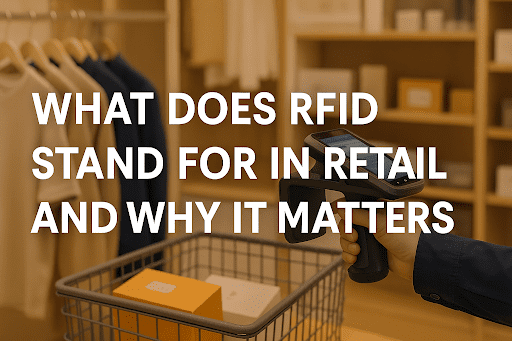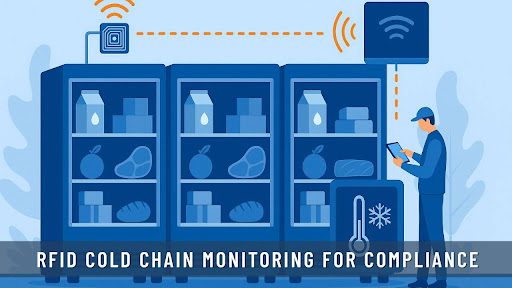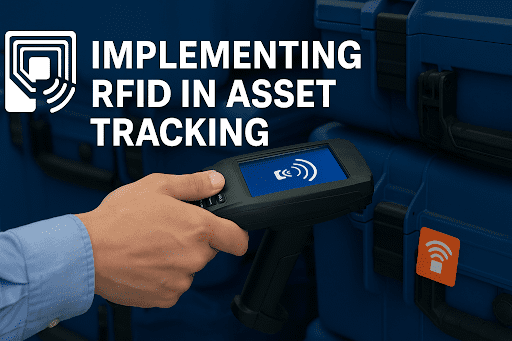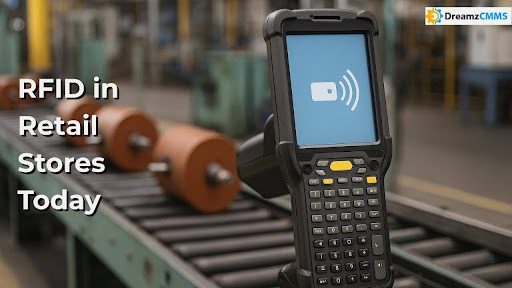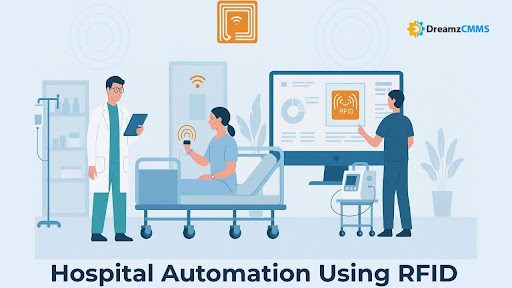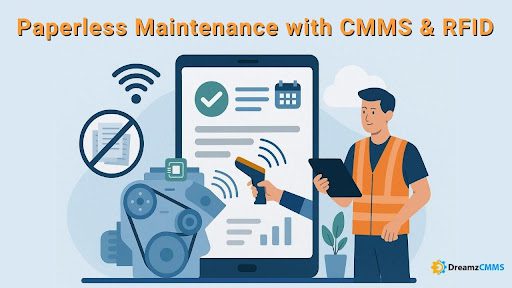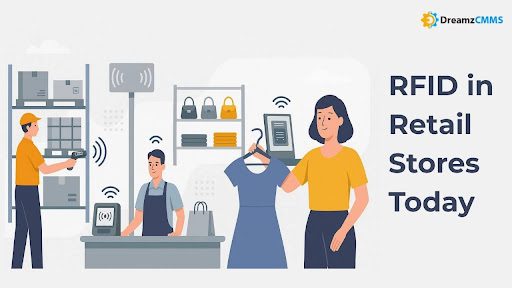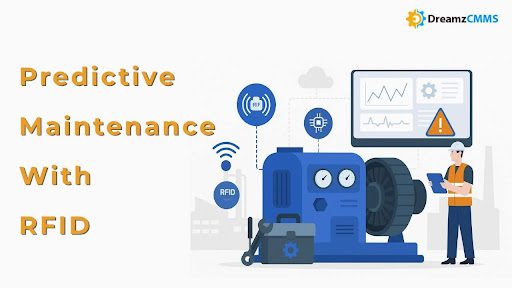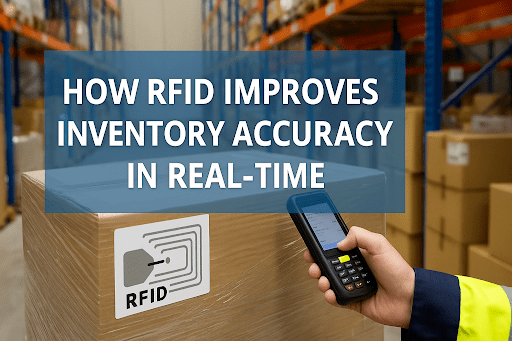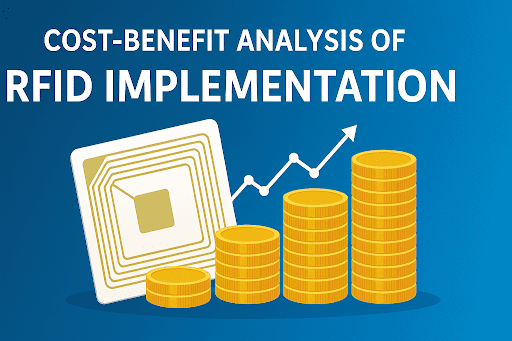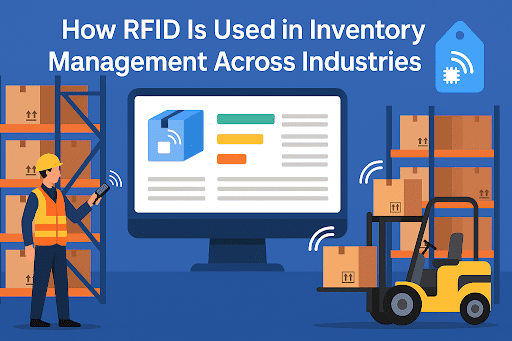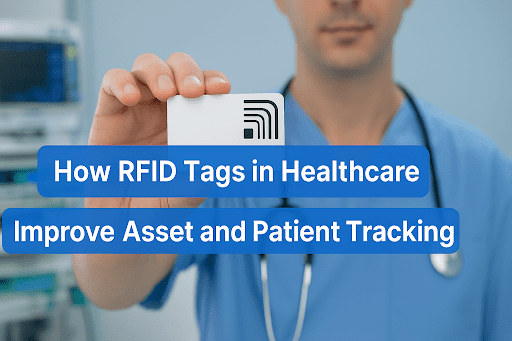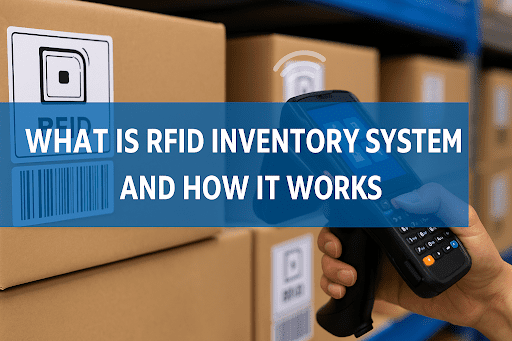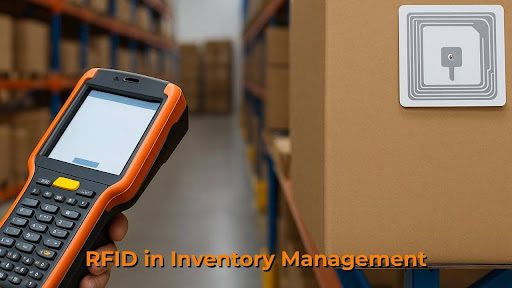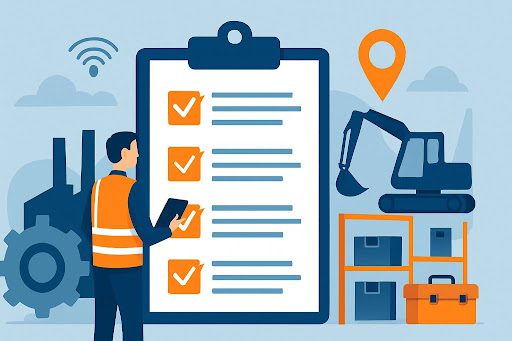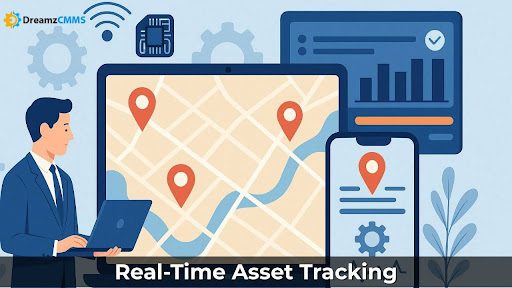 BACK TO Blog
BACK TO Blog
Asset Rental Management
RFID Asset Tracking
The Cost of Inventory Blind Spots It starts small. One item is unaccounted for. Someone shrugs it off. Then it happens again. By the time anyone notices, the issue is already bigger than expected. Inventory errors creep in slowly. A missed scan. An incorrect entry. Stock that says “in” but
- August 08, 2025
- DreamzCMMS Team
- 8 minutes read
- August 08, 2025
- DreamzCMMS Team
- 8 minutes read
The Cost of Inventory Blind Spots
It starts small. One item is unaccounted for. Someone shrugs it off. Then it happens again. By the time anyone notices, the issue is already bigger than expected.
Inventory errors creep in slowly. A missed scan. An incorrect entry. Stock that says “in” but is already gone. These are not tech failures. They are people trying to manage too much without the right support.
Leaders usually do not see the problem until it becomes a pattern when delays pile up or numbers stop making sense. That is when questions start coming from clients, finance, or operations. And the answers are not always clear.
This is why more businesses are looking at RFID Asset Tracking Software. Not just for speed. For clarity. When items update themselves without scanning, the noise disappears. What is left is clean, reliable data.
That makes decisions easier. It removes the guesswork. And over time, it helps teams stay focused on outcomes instead of chasing missing parts.
In the sections ahead, we will get into how RFID works and why it fits into smarter inventory planning especially for those managing large teams, big sites, or fast-moving goods.
What RFID Changes
Most systems wait for someone to scan a label or click a box. That is how things stay updated. Until they don’t.
People get busy. Items slip through. The numbers start drifting. It happens in almost every industry.
With RFID, that step disappears.
Tags do the talking. You set them up once. After that, they speak to the system on their own. No one has to stop what they are doing to log anything.
That simple shift creates space. Teams stop chasing paperwork. They focus on work, not corrections. And leaders? They stop guessing. They start making calls based on facts—not assumptions.
The way RFID readers and tags for inventory function in the background makes it easier to trust what you see. You are not asking for updates. You are getting them automatically, in real time.
Things just feel clearer. Less noise. Fewer surprises.
This is not about adding complexity. It is about pulling the clutter out and giving your operation some breathing room.
Step-by-Step RFID Inventory Setup
Getting started with RFID is not complicated. But it does take a clear plan. You are adding a layer of visibility not rebuilding everything from scratch.
Step one is simple. Look at what gets lost. What moves fast. What causes delays. That is your starting point. Do not tag everything. Just focus on the trouble spots first.
Now choose your tags. Most go with passive RFID for item-level tracking. They are affordable and hold up well. No battery. No maintenance. They just work when they pass near a reader.
Then place the readers. Think about where items move loading docks, storage rooms, doors between departments. That is where you want visibility. Once those are in place, your RFID inventory tracking system starts doing its job.
The last piece is your software. This is where all the information comes together. You see what is moving, what is stuck, and what has not been touched in weeks. Good software will give you clean data, not just lists.
From there, expand. Slowly. Let your team get used to it. Let the system prove itself. Once it does, you will know where to go next.
Curious How It Would Work for You?You do not have to guess. You do not have to commit either. If RFID sounds useful but you are not sure how it fits there is an easy way to find out.Book a Free Demo See how real-time tracking looks inside your workflow. No pressure. No setup hassle. Just a test run, on your terms. |
Choosing the Right RFID Tools
You do not need to spend big to get it right. You just need gear that matches how your operation actually runs.
Start with tags. For most inventory setups, passive RFID works fine. No batteries. No upkeep. Just stick it on, and it talks when it needs to. If things move fast or get handled a lot, these tags hold up well.
Then pick your readers. You do not need them everywhere. Just place them where movement happens—receiving, storage, check-out zones. A few smart spots will cover more ground than you think.
Now the software. That is where it all comes together. You want something that shows what is going on without a maze of menus. Quick filters. Easy history logs. Clear signals when something is off. That is what helps teams act instead of react.
A setup like Asset Maintenance Management Software can give you that kind of visibility. It ties into movement, tracking, even service workflows so you see more with less effort.
You are not looking for the most features. You are looking for a fit.
Real ROI in Real Companies
RFID sounds like a tech upgrade. But for most businesses, it becomes something bigger. It starts cutting waste. Then it starts saving time. Before long, it starts showing up in the numbers.
Take shrinkage. A tool goes missing, or stock gets counted twice. That adds up fast. With real-time inventory tracking using RFID, those gaps close. You start seeing what is where without chasing reports.
There is also the time factor. Teams spend hours walking aisles, checking shelves, updating sheets. That all disappears. The system updates itself. You get your time back. They get theirs too.
It also helps at scale. More items? More movement? No problem. RFID handles high volume without getting clunky. That is what makes it work across industries from retail to field service.
Companies that rent, rotate, or service equipment have seen the biggest gains. That is where something like Asset Rental Management Software can really shine. Add RFID tracking, and everything moves faster with less confusion. Check-ins. Checkouts. No surprises.
So yes, there is an investment up front. But the return shows up fast in fewer mistakes, better tracking, and more time to focus on the work that actually drives results.
RFID vs Barcode – What to Know
Barcodes still work. No question there. They are cheap, fast to print, and simple to train on. But they need people. A scanner. A straight line. And someone to point and shoot.
That is where things slow down.
RFID does not ask for that. You tag the item once. After that, it updates on its own. No aiming. No scanning. Just movement and the system takes care of the rest.
If you are tracking high volumes or fast-moving inventory, that difference matters.
With barcodes, every item gets scanned one by one. In busy settings, that becomes a drag. But with RFID for stock management, hundreds of tags can update in the time it takes to walk through a door.
You do not lose that time. You do not lose those items either.
Both systems have a place. If your inventory is small, or you rarely move it, barcodes still work fine. But once your operation scales, RFID starts paying off.
Tie that into a full setup like DreamzCMMS and now you are not just tracking items. You are syncing inventory with asset use, job timing, and maintenance without extra effort.
It is not a replacement. It is a step forward.
Final Take – Where to Begin
Do not overthink the rollout. You are not changing everything on day one. Just start where the mess is.
Pick one zone. Maybe it is where returns pile up. Or where tools keep going missing. That is your first spot.
Use a few tags. One reader. Keep it simple. No training sessions. No big announcements. Just let the system run quietly for a few weeks.
You will know fast if it is helping. If tracking is tighter. If people stop asking the same questions. That is your signal to keep going.
No pushy setup. Just a clean look at how RFID fits what you already do.
This is not about new tech for the sake of it. It is about control—real control—that shows up without adding friction.
Start small. Watch what happens. Then move forward at your pace.
Additional Reads You Might Find UsefulIf you want to dig deeper into how RFID fits into specific industries or concepts, these resources are a good place to start:
|
Ready to Try It?You have seen what RFID can solve lost time, missing stock, messy reports. It is not about adding more work. It is about making the work smoother.If you want to see how RFID inventory control systems fit into your process, do not guess. Just test it.Start here: Book a Free Demo No prep. No commitment. Just a clear look at what changes when your inventory starts telling the truth on its own. |
Ready for More?
Talk to one of our CMMS experts and see how DreamzCMMS can simplify your maintenance operations.
Book a free consultation